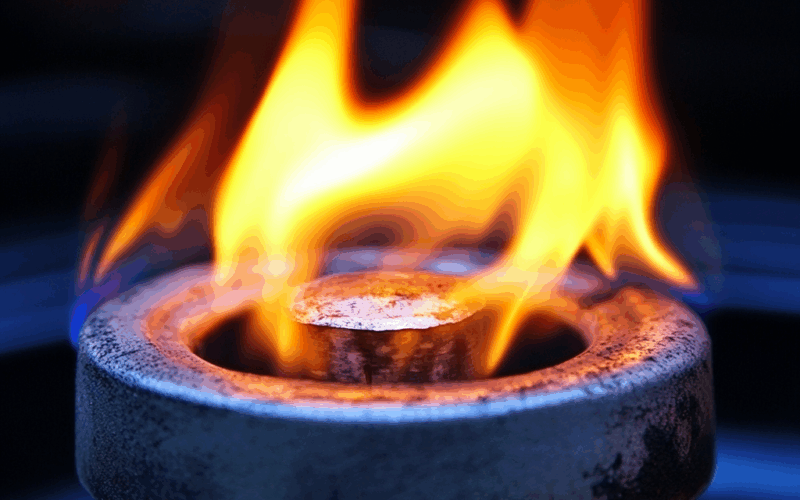Understanding Oil Burner Systems
Oil burners are integral to residential, commercial, and industrial heating systems, transforming fuel oil into usable heat through a carefully controlled combustion process. These systems are composed of several critical components, including a fuel pump to deliver oil, a nozzle to atomize the fuel, an ignition system (often an electric spark or pilot flame), and a combustion chamber where the burning occurs. The coordination of these parts is essential for achieving efficient energy transfer and minimizing harmful emissions.
A clear understanding of how oil burners function allows operators to identify issues early, avoid common mistakes, and apply the correct maintenance techniques. It’s also important to recognize the variety of oil burners available—such as pressure burners, vaporizing burners, and rotary cup burners—which differ in operating mechanisms and servicing needs. Technicians and facility managers should be familiar with the specific model they are working with to ensure safe operation and troubleshooting accuracy. Knowing how each component behaves under different conditions can also prevent unnecessary downtime and reduce repair costs over time.
Personal Protective Equipment (PPE) Requirements
When handling oil burner systems, the use of appropriate personal protective equipment (PPE) is crucial for minimizing exposure to heat, chemicals, and mechanical hazards. Essential PPE includes flame-resistant (FR) clothing to guard against accidental ignition, chemical-resistant gloves for safe contact with fuel, safety goggles or face shields to protect the eyes from splashes or debris, and steel-toed, oil-resistant footwear. In some environments, particularly enclosed or poorly ventilated spaces, respiratory protection such as cartridge respirators or supplied-air systems may be required to prevent inhalation of toxic vapors.
Equally important is proper training in PPE use. Workers must be able to correctly select, fit, and wear their gear to ensure maximum protection. They should also routinely inspect PPE for signs of damage, such as cracks in lenses or wear in gloves, and understand the disposal or decontamination procedures when equipment becomes compromised. Supervisors should enforce regular checks and provide refresher training to maintain a safety-first culture. Ensuring all workers are adequately protected helps reduce workplace injuries and contributes to more consistent system operation and maintenance.
Safe Handling and Storage of Fuel Oil
Fuel oil is a flammable and environmentally hazardous substance that must be handled and stored with the utmost care. Tanks used for fuel storage must be built from compatible materials, properly grounded to avoid static discharge, and placed in well-ventilated areas away from sources of open flame, sparks, or high temperatures. All transfer operations, such as filling or draining tanks, should be done using certified equipment with anti-spill features to limit the potential for accidents.
To further mitigate risk, every facility should be equipped with spill containment systems, including absorbent pads, berms, and secondary containment basins. These systems should be checked regularly for effectiveness and compliance with local regulations. Employees should be trained to recognize signs of leakage or corrosion in storage tanks, piping, and connections. Emergency response procedures, including immediate shutdown protocols and containment methods, should be clearly communicated and posted in accessible locations. Proper labeling and signage near fuel areas are also essential to prevent unauthorized access and accidental ignition during routine operations.
Fire and Explosion Prevention Measures
Working with oil burners inherently involves fire and explosion risks, making prevention efforts a critical aspect of safe operation. One of the most important preventive steps is maintaining adequate clearances around burner systems to avoid heat buildup and the accumulation of flammable materials such as dust, oil-soaked rags, or insulation. All burners and associated components should be properly grounded and installed to meet electrical codes, minimizing the chance of arcing or short circuits.
Ventilation systems must be capable of effectively removing flammable vapors from the workspace. Exhaust fans, vapor sensors, and interlocks that disable ignition sources when unsafe conditions are detected are all part of a robust safety infrastructure. Regular inspection and maintenance of these systems are necessary to ensure they function correctly. Additionally, automatic shutdown features such as flame failure sensors, high-pressure switches, and emergency fuel cutoffs should be tested during routine checks. Clear signage, proper lighting, and readily available fire extinguishers round out a comprehensive fire safety plan.
Routine Maintenance and Inspection Protocols
Scheduled maintenance and thorough inspection are critical to ensuring the efficiency, safety, and durability of oil burner systems. Common maintenance tasks include cleaning the nozzle to maintain proper spray patterns, inspecting the combustion chamber for residue buildup, checking the ignition electrodes, and testing fuel pressure and air mixture levels. Skipping these tasks can lead to incomplete combustion, which not only reduces energy efficiency but also increases emissions and safety risks.
A well-documented maintenance schedule is essential for compliance with safety regulations and for keeping track of potential long-term issues. Maintenance logs should detail all inspections, repairs, parts replacements, and system adjustments. Only trained personnel should carry out these procedures to avoid accidental damage or misdiagnosis. Any warning signs—such as unusual noises, fluctuating flame patterns, or irregular fuel consumption—must be addressed immediately to prevent major system failures. Investing in proactive maintenance helps avoid costly downtime and extends the lifespan of equipment significantly.
Emergency Procedures and Response Plans
In any facility using oil burners, having well-prepared emergency procedures is vital to protecting workers and property. Emergencies may include fuel spills, system malfunctions, fires, or toxic vapor leaks, all of which require swift and decisive action to mitigate damage.
Emergency protocols should cover these five areas:
- Recognizing and reporting hazardous events, including leaks, equipment failures, or fire outbreaks.
- Executing safe shutdown procedures for the oil burner system and isolating the affected area.
- Evacuating all personnel according to pre-defined routes, ensuring safety without causing panic.
- Deploying emergency equipment, such as fire extinguishers or spill kits, to contain and control the situation.
- Coordinating with emergency services and documenting the incident for regulatory compliance and future improvement.
Employees must be trained regularly through drills and refresher courses to ensure everyone understands their roles and actions during an emergency. Updated floor plans, contact lists, and safety signage should be clearly displayed. An effective emergency response strategy minimizes harm and ensures quick recovery from potentially dangerous situations.
Question and Answer
Answer 1: Oil burners use fuel pumps, nozzles, ignition systems, and combustion chambers to generate heat safely.
Answer 2: Flame-resistant clothing, gloves, goggles, protective boots, and sometimes respirators.
Answer 3: Use grounded, ventilated tanks with spill kits and trained personnel handling all procedures.
Answer 4: Ensure ventilation, remove flammable materials, inspect sensors, and use automatic shutoffs.
Answer 5: Cleaning nozzles, inspecting chambers, logging all service, and addressing any warning signs quickly.

